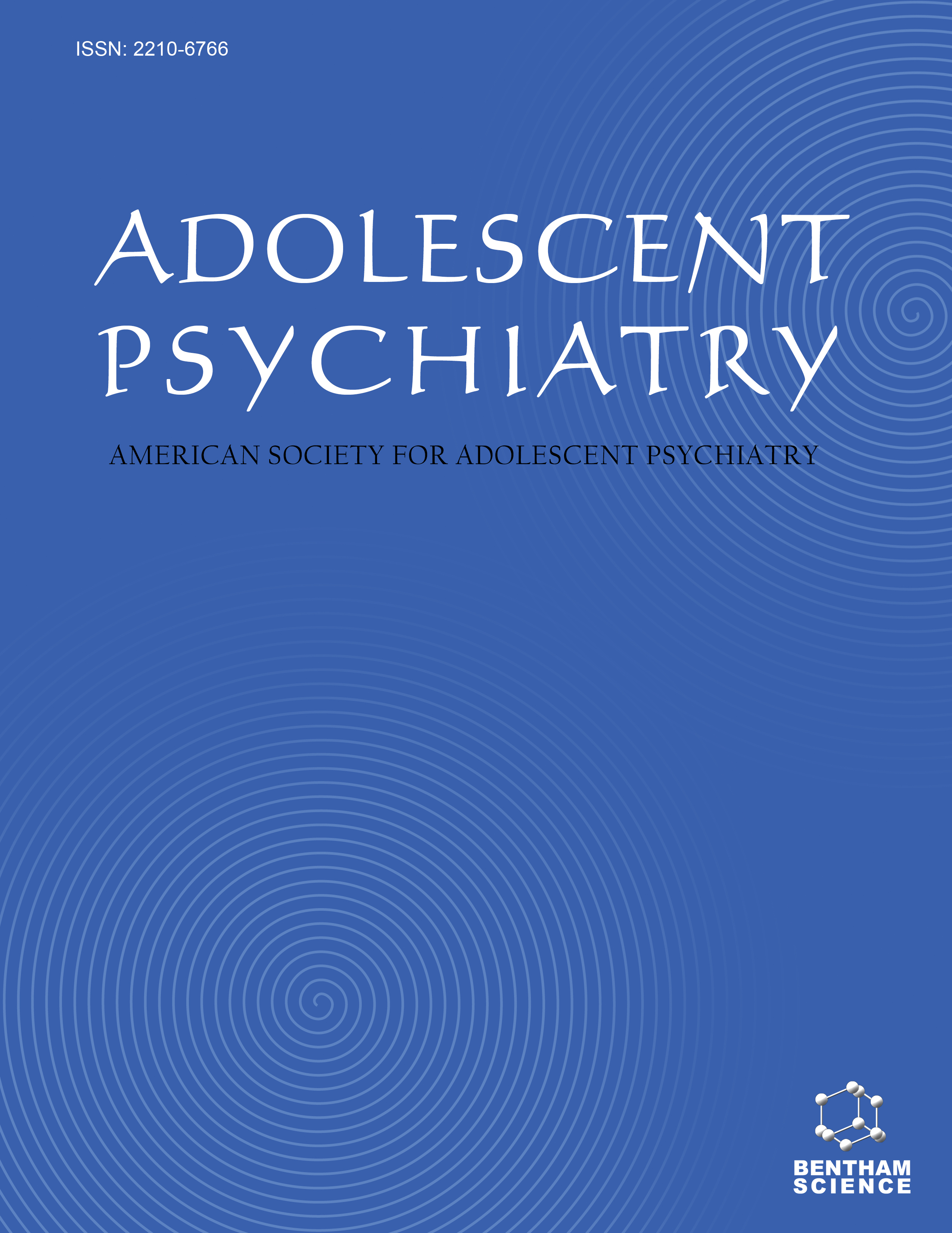- Home
- A-Z Publications
- Adolescent Psychiatry
- Previous Issues
- Volume 4, Issue 2, 2014
Adolescent Psychiatry - Volume 4, Issue 2, 2014
Volume 4, Issue 2, 2014
-
-
Professionalism and Adolescent Psychiatry in the Digital Age
More LessBackground: The digital revolution has changed healthcare forever. In adolescent psychiatry, the infrastructure of our practice – billing, record-keeping and communication with patients and colleagues – is increasingly occurring electronically and online. Adolescent psychiatrists are likely to interface with technology in their practice, in part because of the high prevalence of use of social media among their patients and also a Read More
-
-
-
Social Media Use among Adolescents: Benefits and Risks
More LessAuthors: Dana Reid and Paul WeigleBackground: Although use of social media is an important part of adolescents’ lives, the mental health impact of this activity is largely unknown to practitioners. Methods: An extensive literature search was conducted regarding social media use among adolescents and the benefits and potential risks associated with that use. A PUBMED search was conducted using various terms including “social media and teens”, “social media a Read More
-
-
-
Internet and Video Game Addiction: Evidence & Controversy
More LessBy Paul WeigleBackground: In recent years child and adolescent engagement in online activities and video games has increased dramatically to the point that it dominates the free time of many youth. Many young people seem unable to control their excessive use of technology in spite of consequences which impair aspects of their daily functioning. Methods: This article summarizes the literature regarding pathological video game and In Read More
-
-
-
Helping Parents Promote Healthy and Safe Computer Habits
More LessAuthors: Paul Weigle and Dana ReidBackground: Use of computer technologies, whether online or playing video games, can pose significant and inherent mental health risks for children and adolescents. Parents are in the best position to influence and control their child’s computer experiences and habits, and so it is the duty of mental health providers to inform parents about these risks and how they can be mitigated. Method: This article reviews trends i Read More
-
-
-
Reconsidering the Scenario of Cyberbullying: Promoting the Internalization of the Locus of Control in Adolescents through Cognitive Restructuring
More LessAuthors: Jose Maria Ariso and David ReyeroBackground: Cyber bullying has become a focus of attention as having significant negative impacts on adolescents’ mental health. Victims of cyber bullying tend to have an external locus of control (ELOC). They are typically counseled not to respond to the bully. This can lead to a sense of helplessness and resignation, and reinforcement of their view of themselves as helpless to control their environment. There is a need fo Read More
-
-
-
Video Games and Sleep: An Overlooked Challenge
More LessBackground: Video games (VGs) are increasingly becoming the pastime of choice for American youth. Recent US surveys indicate that up to 99% of adolescents play VGs regularly. Caregivers and clinicians are appropriately concerned about the effects of VGs on children’s well being. Adolescents'; play habits may expose them to negative effects associated with VG play on sleep. Methods: This article selectively review Read More
-
-
-
Communication of Suicidality via Social Media
More LessBackground: Adolescents have increasingly relied on social media for communication. Communication of feelings of despair and suicidal thoughts and intentions sometimes occur. These form a type of peer-to-peer communication, which may or may not result in a response that eventuates in appropriate intervention. Method: This article presents the case of an adolescent who was hospitalized after her mother discovered that Read More
-
-
-
Problematic Internet Use: A Case of Social Media Addiction
More LessBackground: Internet addiction, also called Problematic internet use, has an estimated prevalence globally of 5- 10%, quickly becoming an increasingly important clinical problem in adolescent psychiatry. Method: A case of social media addiction in a 13-year-old girl is presented and discussed using Tam and Walter’s “Basic Model of PIU in Youth” (Tam and Walter, 2013). Potential treatment approaches are also review Read More
-
-
-
Using Digital and Social Media Metrics to Develop Mental Health Approaches for Youth
More LessAuthors: Christina Carew, Stan Kutcher, Yifeng Wei and Alan McLuckieObjective: The objective of this project was to investigate the online behaviors of adolescent and adult populations with respect to mental health information seeking, and identify differences in approaches within age groups and geographical location. Method: This content analysis approach identified and mapped patterns in online conversations. The search data was able to quantify who was looking for teen mental health inf Read More
-
-
-
Risk Factors for Youth Problematic Internet Use: A Cross-sectional Study
More LessAuthors: Leila Cherif, Hela Ayadi, Souhel Khemekhem, Yousr Moalla and Farhat GhribiObjective: The aim of this study was to identify correlates that might constitute risk factors for Problematic Internet Use (PIU) among urban Tunisian high school students. Methods: This cross-sectional study was carried out on 587 secondary school students, aged 14 to 20 years. They were recruited from seven secondary schools randomly selected in the urban area of Sfax. The self-administered Young's 8-item questionnair Read More
-
Most Read This Month
Article
content/journals/aps
Journal
10
5
false
en


